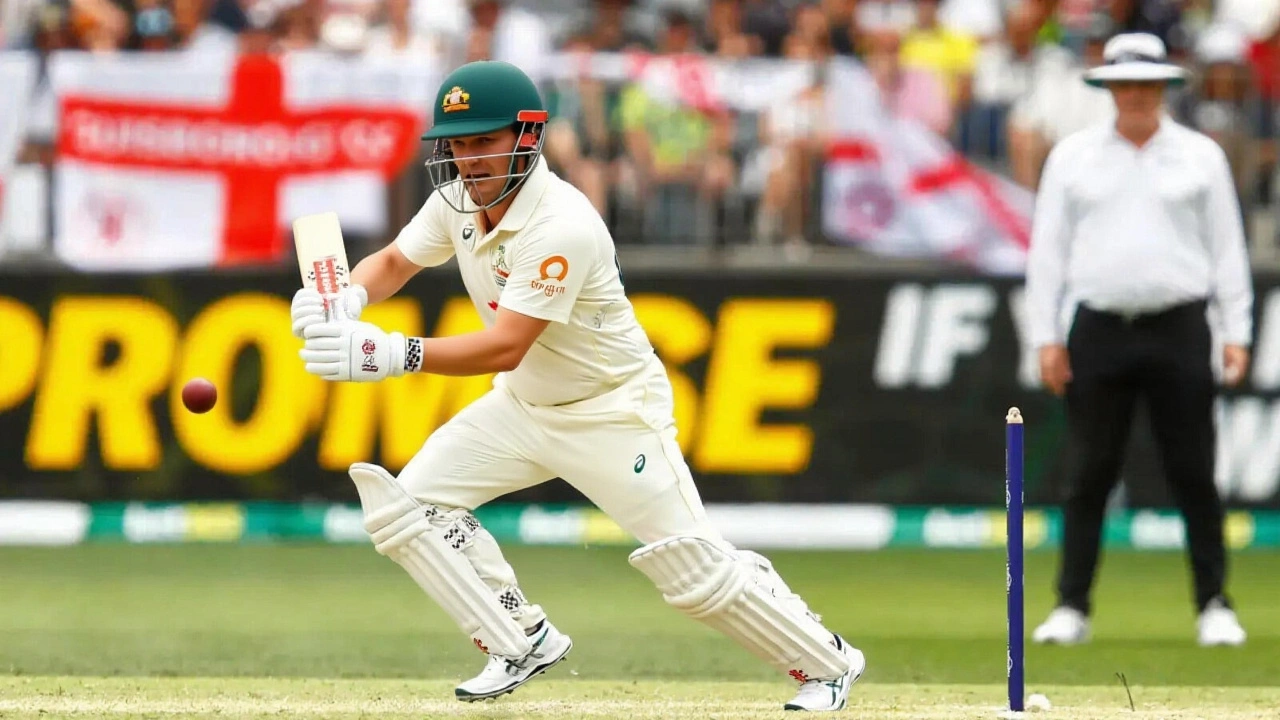On November 22, 2025, Australia pulled off one of the most breathtaking turnarounds in Test cricket history, defeating England by eight wickets at Perth Stadium to win the First Ashes Test. The victory wasn’t just a win—it was a statement. It marked the first time in 104 years that Australia had chased down a target in Perth after being asked to follow on—or, more accurately, after England’s batting collapse handed them an insurmountable lead. The crowd erupted. The commentary boxes fell silent. And cricket history was rewritten.
A Collapse That Shook the Cricket World
England’s innings began with promise but unraveled with shocking speed. By the time the ninth wicket fell, they were all out for 217—after posting 392 in their first innings. The collapse from 76 for five to all out wasn’t just poor batting; it was a systemic failure under pressure. Mitchell Starc, the Australian left-arm fast bowler, delivered the kind of opening over that legends are made of. He removed openers with precision, then returned later to claim three wickets. Scott Boland, the unassuming off-cutter specialist, found the right length every time, exploiting the rough outside off-stump that Perth’s pitch offered.
Key dismissals told the story: Ben Duckett caught behind for 14 by Steve Smith—his 203rd Test catch, a record for a non-wicketkeeper. Ollie Pope edged a delivery that nipped back, out for 33. And then there was Joe Root, England’s rock, trudging off after a 28-ball duck, his bat heavy, his shoulders slumped. The commentary from TNT Sports called it "carnage." The YouTube highlights from Nine's Wide World of Sports showed players staring at the ground, as if wondering how it all went so wrong.
Travball vs. Bazball: The Clash of Philosophies
While England clung to their "Bazball" philosophy—aggressive, high-risk, high-reward—Australia responded with what fans now call "Travball." It wasn’t just aggression. It was calculated, ruthless, and utterly fearless. Enter Travis Head, the 31-year-old opening batsman who turned a match into a masterclass. He didn’t just score a century—he carved one. With the outfield slow and the ball old, Head targeted the on-side gaps like a sniper. Four boundaries in one over. A pull shot that cleared the long-on boundary with room to spare. A late cut that kissed the rope like it was meant to be there.
"He wasn’t just seeing the ball—he was seeing the whole field," said Cricket.com.au’s post-match analysis. "He knew where the fielders were before they even moved." His 123 off 139 balls wasn’t just the fastest century of the innings—it was the fastest ever by an Australian opener in a chase at Perth. The crowd chanted his name. The England bowlers looked exhausted before their second innings even began.

A 104-Year Miracle, Explained
The last time Australia won a Test in Perth by eight wickets after being bowled out for less than 250 in the first innings? 1921. Back then, Don Bradman was 12 years old. The pitch was raw, the balls were harder, and the batting averages were lower. This time, the conditions were different—faster, bouncier, more unpredictable. Yet Australia adapted. They didn’t rely on luck. They relied on preparation.
"We knew the conditions would help us," said Nine's Wide World of Sports’s lead analyst. "But no one expected this. Not this fast. Not this complete." The win wasn’t just about skill—it was about belief. After losing the last three Ashes series, Australia had been written off. Now, they’ve sent a message: this isn’t just a comeback. It’s a reckoning.
What Comes Next? The Ashes Are Now a War of Nerves
The five-match series shifts to the Melbourne Cricket Ground on December 26, 2025. England will need to regroup—fast. Their batting order has no depth. Their spinners looked toothless. And their captain, Ben Stokes, now faces mounting pressure to change tactics. Meanwhile, Australia’s confidence is sky-high. Pat Cummins, their captain, didn’t say much after the match. He didn’t need to. His smile said everything.
The next Test will be a test of resilience. Can England rebuild? Or will Australia continue their dominance? One thing’s certain: the Ashes are no longer about tradition. They’re about momentum. And right now, Australia has all of it.

Behind the Numbers: The Stats That Tell the Story
- England’s collapse: 76 for five in 28.1 overs
- Travis Head’s century: 123 runs off 139 balls (15 fours, 5 sixes)
- Mitchell Starc’s figures: 3 for 42 in 14 overs
- Scott Boland’s figures: 2 for 37 in 16 overs
- Australia’s winning margin: 8 wickets with 122 balls to spare
- Last time Australia won by 8+ wickets in Perth after a low first innings: 1921
Frequently Asked Questions
How rare is an 8-wicket win in Perth after a low first innings score?
Extremely rare. Australia’s 8-wicket win on November 22, 2025, was the first such result in Perth since 1921—104 years ago. In that time, only three Tests in Perth have ended with a win by eight wickets or more, and none involved a team chasing after being bowled out for under 250 in their first innings. This win breaks a century-long statistical drought.
Why is Travis Head’s innings called "Travball"?
"Travball" is a play on England’s "Bazball"—an aggressive, high-risk style named after coach Brendon McCullum. Head’s approach mirrors that energy but with more precision. He targets vacant areas, uses the pace of the pitch, and doesn’t waste shots. Unlike Bazball’s chaos, Travball is controlled chaos. Fans and analysts coined the term after his 123 in Perth, where he scored 48 runs off the final 20 balls.
What impact does this win have on Australia’s Ashes campaign?
It’s a psychological game-changer. England entered the series as favorites after their recent Test wins abroad. This loss, especially in such dramatic fashion, rattles their confidence. Australia now leads the series 1-0 with momentum, home advantage, and a bowling attack that’s peaking. The next four Tests will be about whether England can recover—or if Australia will sweep them.
Why was Mitchell Starc so effective in this match?
Starc exploited Perth’s early-morning swing and the rough outside off-stump created by Boland’s bowling. He bowled 14 overs with 8 maidens and consistently hit the seam. His first over in England’s second innings removed two batsmen in three balls. Analysts noted he was the only bowler who consistently forced the edge—and England’s batsmen didn’t adjust. He’s now the leading wicket-taker in Ashes Tests since 2023.
Did weather or pitch conditions play a role?
Absolutely. Perth Stadium’s pitch was drier and faster than usual, with cracks developing after the first day. The ball kept low after 40 overs, making it hard for England’s middle order to play sweeps or reverse sweeps. The morning dew also helped Starc’s swing. Australian captain Pat Cummins later admitted they targeted this pitch specifically in their preparation.
What’s the historical significance of this Ashes win?
This win ties Australia with England for the most Ashes Test victories since 1882, now at 133 each. But more importantly, it ends a 104-year wait for a Perth win by eight wickets after a low first innings—something even Bradman’s 1930s teams never achieved. It’s a landmark moment for Australian cricket, proving their ability to dominate under pressure in the most hostile conditions.



